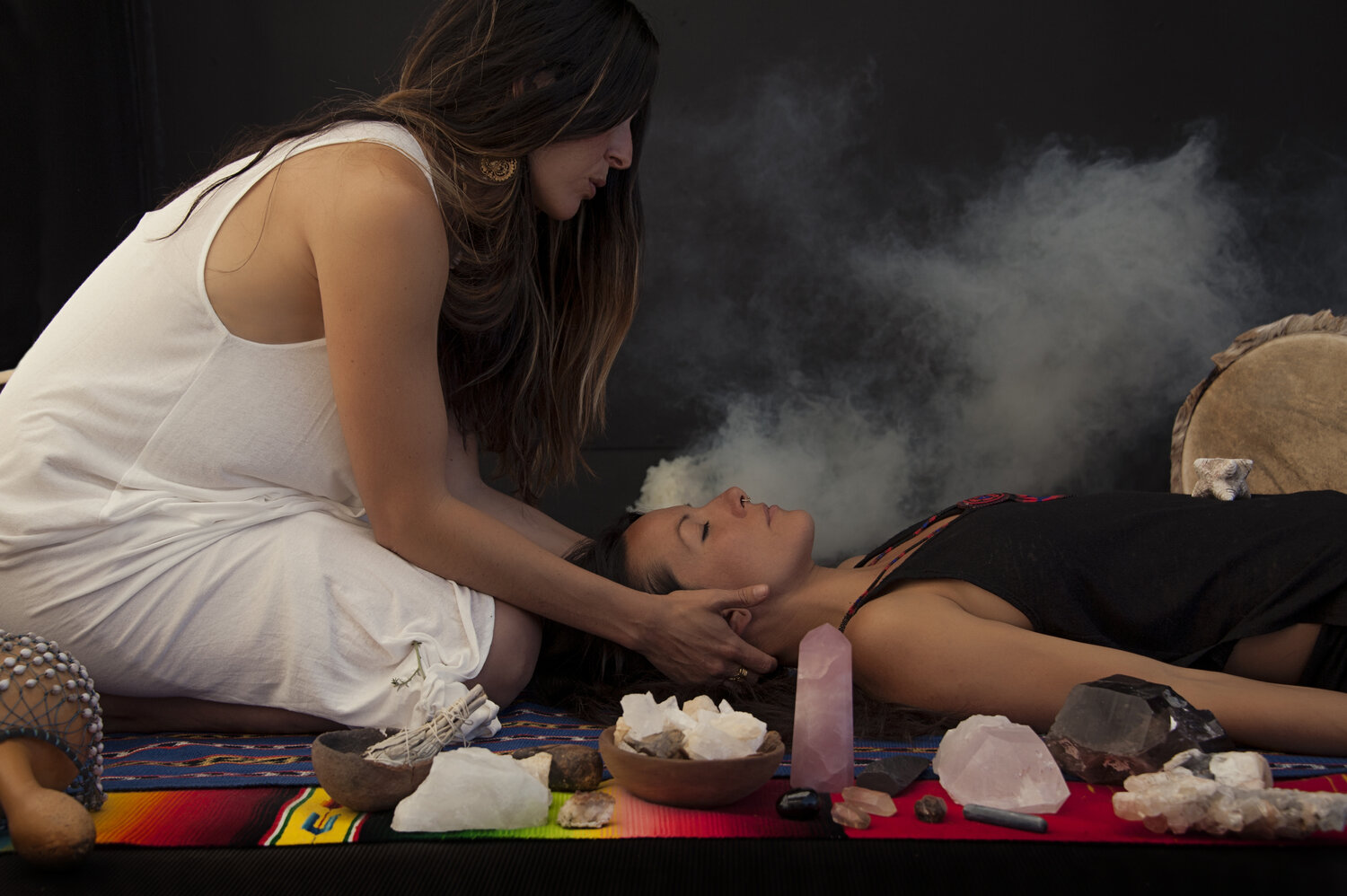
Psychedelics are widely recognized as a therapeutic tool, thanks to decades of research. As the Western medical model catches up with longstanding ancient practices of working with psychedelics, two approaches are emerging in this space: “ceremonial” experiences and “clinical” psychedelic-assisted therapy. While both incorporate similar medicines and pharmacological effects, the felt experience all will differ dramatically through their originations, context, and applications.
Sitting in Ceremony
Ritual use of psychedelics has deep roots, stretching back for millennia in various cultures around the world. In ancient history, psychedelics were likely confined to sacred contexts. Today, these rituals are often facilitated by trained spiritual leaders who hold the wisdom of their lineage, serving as guides and protectors for those embarking on their inner journeys.
One of the distinctions of the ceremonial setting is the underlying framework. Rather than viewing mental health challenges through the lens of a “disordered” psyche, the ceremonial perspective often sees suffering as stemming from spiritual disconnection or imbalances in key relationships. The intention is not to “fix” the individual, but to facilitate a shift in the relationships with the sacred, the natural world, and the essence of one’s being within a community.
This difference in perspective can manifest in the approach to the experience itself. In ceremony, the focus tends to be on the collective, with participants often working in a group setting, supported by the rituals, songs, and prayers. Often, the psychedelic effects of the sacrament are downplayed within other healing elements that make up the ceremony, such as songs, chanting, music, and even dancing. Communitas is a foundation of the ceremonial purpose, as these events were usually intended to support the wellbeing of the larger social network; after all, survival of the human species has always relied on societies. The emphasis is on attending to relationships between the individual, the medicine, and the collective, and in many some shamanic healing traditions, non-psychedelic “plant teachers” may be offered to participants, for the unique healing properties of those plants. The concept of integration and its benefits, heavily emphasized in the clinical model, are typically absent from the ceremonial model.
A Clinical Spin
In contrast, the psychedelic-assisted therapy model aligns more closely with the Western psychological framework of meaning making, with the therapist serving as a support before, during, and after the experience. Here, the focus of a clinical mental health provider is based on a different set of assumptions, and is aimed at addressing specific mental health concerns of an individual, such as depression, anxiety, trauma, or addiction, using the psychedelic experience as a catalyst for deeper exploration and integration.
The psychotherapeutic context typically involves a more intimate dynamic between the client and the therapist(s), with a strong emphasis on the individual’s unique needs. The setting itself is often designed to be calm and welcoming—think soft lighting, comfortable furniture, and music designed to soothe and support the therapeutic process. During preparation sessions, the therapist helps to address expectations and intentions, making sure the client feels safe, comfortable, and ready to let go. While in dosing sessions the therapist talks a lot less, they must be equipped to handle any challenges that may arise and must be sensitive to the increased vulnerability, suggestibility and emotional impact of the psychedelics on the client. The therapist’s ability to understand and navigate the complexities of the psyche become crucial during integration, helping the client to confront pain, embody resilience, and make meaning of their experience. One of the advantages of psychedelic-assisted therapy is the potential for more individual psychological attention and support, within a more structured process, where the therapist can work closely with the client through all phases of the clinical approach.
Navigating the Overlap
It’s important to note that ceremony and therapy share many qualities, and each approach can offer elements of the other. There are instances where ceremonial settings incorporate therapeutic elements, and vice versa, with facilitators or therapists blending modalities to create a more holistic experience.
The key is to recognize the unique strengths and limitations of each approach and to thoughtfully consider the needs and circumstances of the individual. For some, a ceremonial experience may be the optimal path, providing a deeper connection to the collective within a spiritual framework. For others, a clinically-informed psychedelic-assisted therapy model may be better suited to address specific mental health goals. Some people prefer communal group settings for healing over a more private, individualized setting. Ultimately, the choice between ceremony and therapy, or even a combination of the two, can be determined through the individual’s goals, their mental health history, and the training of the facilitators or therapists involved.
Conclusion
In the ever-changing landscape of psychedelic medicine, an integrative approach of diverse modalities can enhance the effectiveness and resilience of the therapeutic practice. As a clinician, a big part of this work is maintaining a curious, open mind that is attuned to the client. As a client, the effort lies in developing trust in one’s own intuition and inner wisdom. Honoring both the ceremonial and therapeutic realms can ensure access to the most suitable and empowering pathways for mind-body-spirit wellness.







